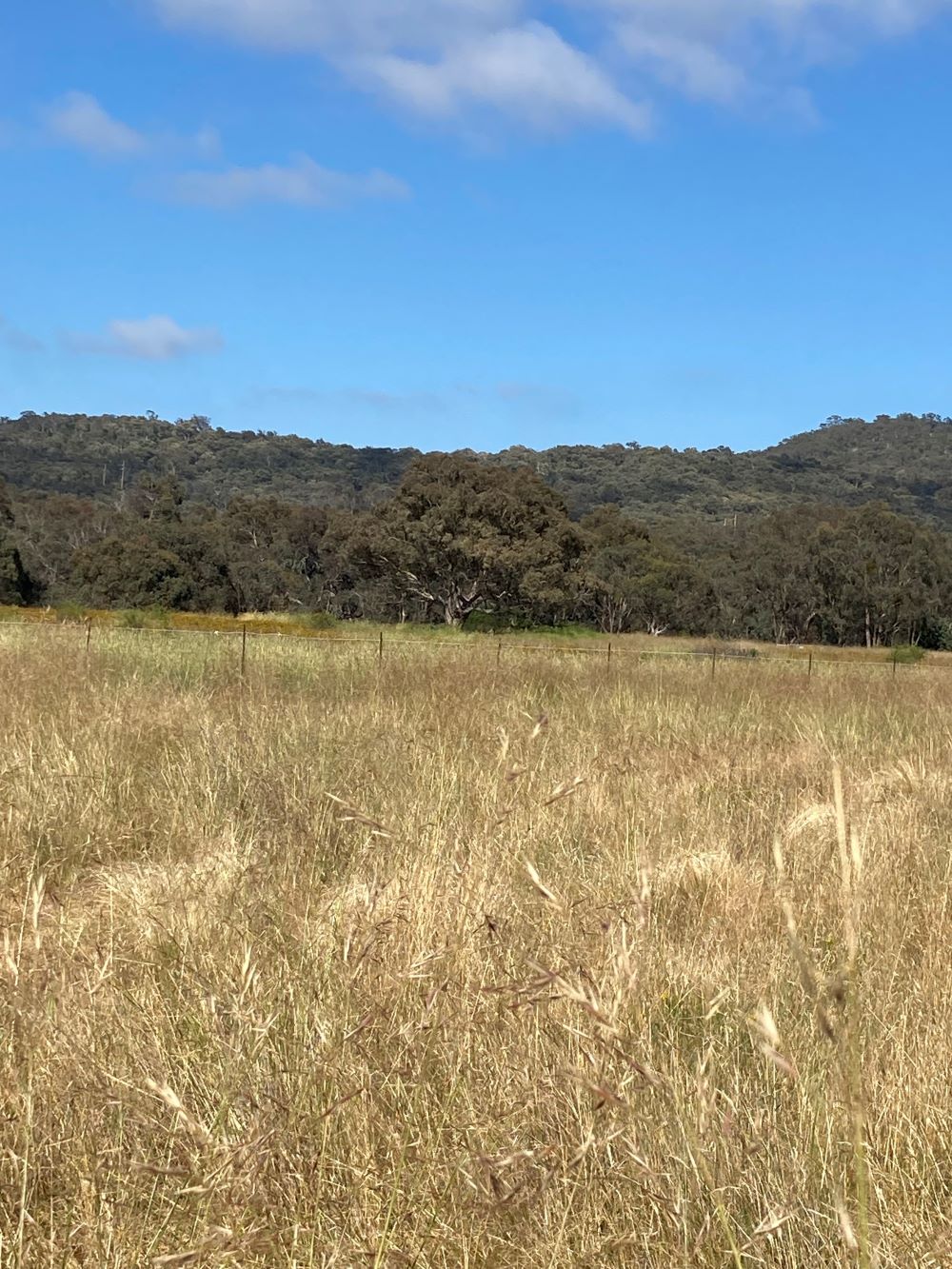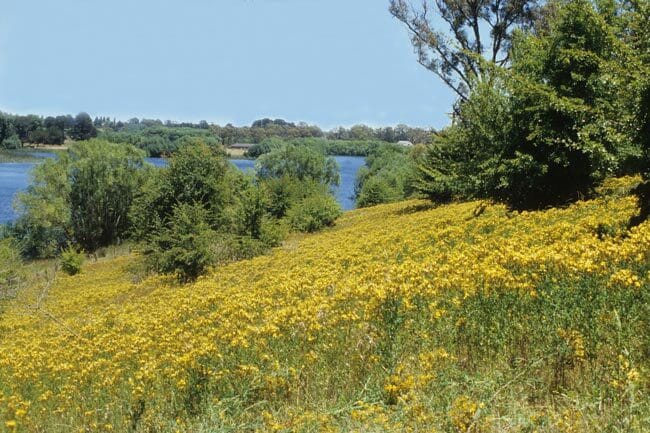St John’s Wort has spread like wildfire across the Canberra region, wreaking havoc on native plant species in grasslands and farmland – and the invasion is worsening.
Known for its use in alternative therapies, the noxious weed was introduced to Australia from Europe in 1875 to be cultivated for medicinal purposes.
Attempts to contain St John’s Wort to private land failed, and the invasive weed rapidly spread.
St John’s Wort is listed as one of the four most serious grassland weeds in the ACT Government’s Natural Temperate Grassland Endangered Ecological Community Action Plan, emphasising the gravity of the environmental threat it poses.
St John’s Wort spreads, and spreads in Tharwa area
Catherine Keirnan is a local farmer with a family beef cattle property near Tharwa and a director of Landcare ACT.
The substantial rainfall the Canberra region has experienced in the La Nina years from 2020 to now, after years of severe drought, has benefited all plants, including weeds like St John’s Wort.
According to Catherine, there’d hardly be any farmer in the Territory who could confidently say they don’t have St John’s Wort on their property.
On her farm, there is a conscious effort to conserve nature as well as producing beef cattle and dealing with noxious weed is time consuming.
“Managing our native pastures is important and we have to spot spray with the right herbicide for different weeds, without killing surrounding native plants” she says.
“St John’s Wort is a pest plant that must be contained under ACT Legislation, and it really is a problem for livestock if they’re eating it at the time of the year when it’s the most toxic, when it’s covered in the distinctive yellow flowers.
“This year, farms and nature reserves across the Territory have had a lot of it.”
Catherine noticed St John’s Wort was a problem years ago when the face skin of the Hereford cows started to peel after developing photosensitivity.
“It affects their liver and they become sensitive to sunlight. It affects white coloured animals badly. The treatment for it, apart from taking them off the pasture with the Wort, is shade, but having enough shade and weed free pasture is the challenge” she says.
St John’s Wort is a resilient, highly invasive weed.
“It will spread and spread, by seed and its underground root system, and if not controlled it will squeeze out other plants,” Catherine says.
“Farming is about managing the land’s natural resources which includes plants, the good ones and the bad ones. No one likes spraying weeds, but you have to do it”.
A paper on the issues of controlling weeds in the ACT will be published by Landcare ACT in the near future.
Spreading over property boundaries in Majura Valley

Thirty-five kilometres from Tharwa at Majura Valley Farm, Anne McGrath faces a similar battle with St John’s Wort.
The noxious weed has crept across the boundary to her property from unmaintained public land.
One major way it’s able to spread to her farm is through native animals. The wort’s seeds stick to the fur of kangaroos and other wildlife, which unknowingly bring it into Majura Valley Farm.
A recent CSIRO report on invasive species in Australia found weeds take up 12 to 13 per cent of the Australian landscape, which Anne says is “pretty scary”.
To illustrate the extent of the problem, she says her brother and his daughter were forced to use a helicopter to muster cattle because they couldn’t see over the weed’s massive growth.
On the border of Queanbeyan at Oaks Estate during spring and summer, Anne says there’s “masses of it”.
The particular style of regenerative farming practised at Majura Valley Farm makes a positive impact on the management of St John’s Wort, she says.
A standout feature of their holistic farming approach are the rollaway chicken sheds, which subsequently has improved soil quality.
By having a continuous rotation of animals on different pastures, Anne can control St John’s Wort on different areas of the property before livestock are exposed to it.
Additionally, having smaller paddocks allows Anne to let her sheep in to eat the weed down to a low level during its non-toxic period, before moving them on.
“Growing up on farm, I saw a lot of St John’s Wort. It likes deep, rich soils,” she says.
“That’s I think why so much of it is around this year because of the high rainfall.
“If we didn’t go muster the sheep first thing in the morning, you couldn’t move them from the shade of the trees. You’d really have to watch them, they get pink noses and ears and, in extreme cases, they can die, their skin falls off their ears …
“It’s really just a management program and I think it’s becoming bigger and bigger problem because people don’t have the capabilities of managing public land in the ACT.”
Get all the latest Canberra news, sport, entertainment, lifestyle, competitions and more delivered straight to your inbox with the Canberra Daily Daily Newsletter. Sign up here.



